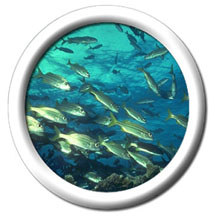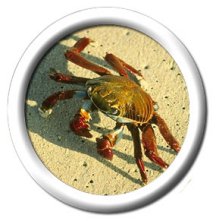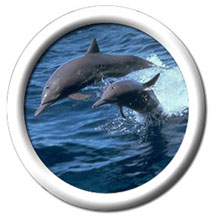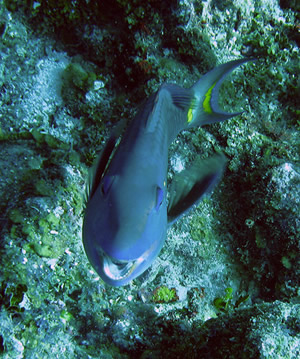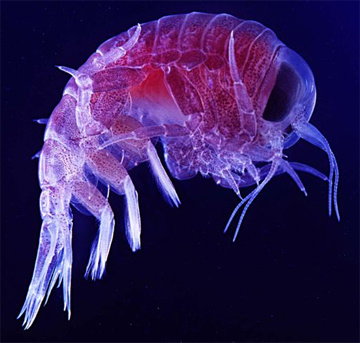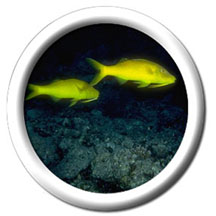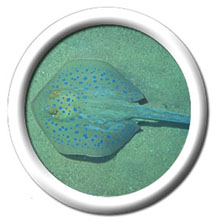Click on image for full size
Windows Original, adapted from Corel Photography
Related links:
How Many Species Have There Been on Earth?
Life that lives in Chesapeake Bay, where the ocean meets rivers and streams
Acidic Ocean Water Impacts Corals and Other Marine Life
Atlantic Coral Reefs Are No Match for This Lion
The Mystery of Mass Extinction is No Longer Murky
Ocean Life
The oceans are full of life. A variety of animals and plants must survive in a complex ecosystem. Invertebrates like crabs, starfish and worms roam the sea floors. Coral grow in large numbers, creating a home for these creatures. All of these animals are called invertebrates, because they don't have a backbone.
Meanwhile, schools of fish roam the depths also looking for a bite to eat. The triggerfish looks for a wandering crab in a reef while a group of tuna pass by. They must stay alert, because the ferocious tiger shark is looking for its prey.
In shallow depths, the plant life flourishes. Sunlight beams down on the different types of algae. These simple plants serve as food for many animals of the sea. Not only are they important to the food chain, they are also used by people in toothpaste, make-up and even clothes!
In the deeper parts of the ocean, the largest animal known is swimming around. The giant blue whale, which can reach 80 feet in length, is a mammal. A family of dolphins plays nearby, but must beware of the pod of killer whales looking for a meal.
Together, these plants and animals make up what we call sea life. Scientists say that life began in the seas, which means that without these creatures, we would not exist. Use the table below to learn all about different sea life.
One way to explore ocean life is by scuba diving. Another way is to use a deep-sea submersible like the Alvin.


